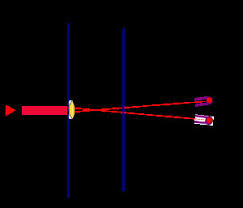
Breaking News
 Armed man claiming to be member of law enforcement arrested at Kirk memorial site
Armed man claiming to be member of law enforcement arrested at Kirk memorial site
 Charlie Kirk was scheduled to speak at CSU in Fort Collins tonight, and 10,000 people turned out...
Charlie Kirk was scheduled to speak at CSU in Fort Collins tonight, and 10,000 people turned out...
 Watch This Fish "Drive" To His Mom To Get Treats | The Dodo
Watch This Fish "Drive" To His Mom To Get Treats | The Dodo
 Tennessee Becomes the First State to Require Gun Safety Courses in Schools
Tennessee Becomes the First State to Require Gun Safety Courses in Schools
Top Tech News
 This "Printed" House Is Stronger Than You Think
This "Printed" House Is Stronger Than You Think
 Top Developers Increasingly Warn That AI Coding Produces Flaws And Risks
Top Developers Increasingly Warn That AI Coding Produces Flaws And Risks
 We finally integrated the tiny brains with computers and AI
We finally integrated the tiny brains with computers and AI
 Stylish Prefab Home Can Be 'Dropped' into Flooded Areas or Anywhere Housing is Needed
Stylish Prefab Home Can Be 'Dropped' into Flooded Areas or Anywhere Housing is Needed
 Energy Secretary Expects Fusion to Power the World in 8-15 Years
Energy Secretary Expects Fusion to Power the World in 8-15 Years
 ORNL tackles control challenges of nuclear rocket engines
ORNL tackles control challenges of nuclear rocket engines
 Tesla Megapack Keynote LIVE - TESLA is Making Transformers !!
Tesla Megapack Keynote LIVE - TESLA is Making Transformers !!
 Methylene chloride (CH2Cl?) and acetone (C?H?O) create a powerful paint remover...
Methylene chloride (CH2Cl?) and acetone (C?H?O) create a powerful paint remover...
 Engineer Builds His Own X-Ray After Hospital Charges Him $69K
Engineer Builds His Own X-Ray After Hospital Charges Him $69K
 Researchers create 2D nanomaterials with up to nine metals for extreme conditions
Researchers create 2D nanomaterials with up to nine metals for extreme conditions
In a quiet lab in Vienna, a group of physicists ran an experiment in 2012 that should have been...

They fired two entangled photons — particles of light linked across space — into a carefully built quantum setup.
One photon was measured immediately. The other was delayed using a long optical fiber. But when they compared the results, something strange happened: the outcome of the first photon's measurement appeared to be influenced by the second, which hadn't been measured yet. Somehow, the future was affecting the past.
This baffling phenomenon was later confirmed in several experiments around the world. It's now known as the Delayed Choice Quantum Eraser — a mind-bending concept where the act of observing a particle can seemingly reach back in time to change what happened before the observation. To be clear: no one is sending messages into the past. But what we are seeing suggests time, at the quantum level, doesn't behave like the linear arrow we experience in daily life.
In classical physics, cause always precedes effect. But in quantum mechanics, particles don't seem to care. If a photon is given the "choice" to behave like a particle or a wave, its behavior isn't fixed until it's measured — and incredibly, the way we choose to measure it can retroactively determine how it acted before the measurement. This isn't just theory anymore. It's been observed in peer-reviewed lab setups using ultra-sensitive detectors and state-of-the-art photon sources.
One version of the experiment split a photon into two entangled twins. One traveled to a detector where it was measured directly. The other passed through a system where scientists could either preserve or erase which-path information — after the first photon had already been detected. The eerie result: the earlier measurement lined up with the later choice, as if the particle somehow "knew" what its partner would encounter.
This shakes the foundation of causality. While no information can travel faster than light — meaning no violation of relativity — the implication is deeper: at the quantum level, reality isn't determined until it's observed, and sometimes, observation in the present seems to sculpt the past.
Some physicists think this hints at a universe that's fundamentally interconnected across space and time. Others wonder whether time itself might be an emergent illusion — something that appears orderly only when observed at scale. Either way, the more we look into quantum mechanics, the more reality stops behaving like reality.



